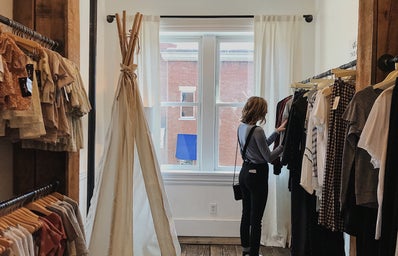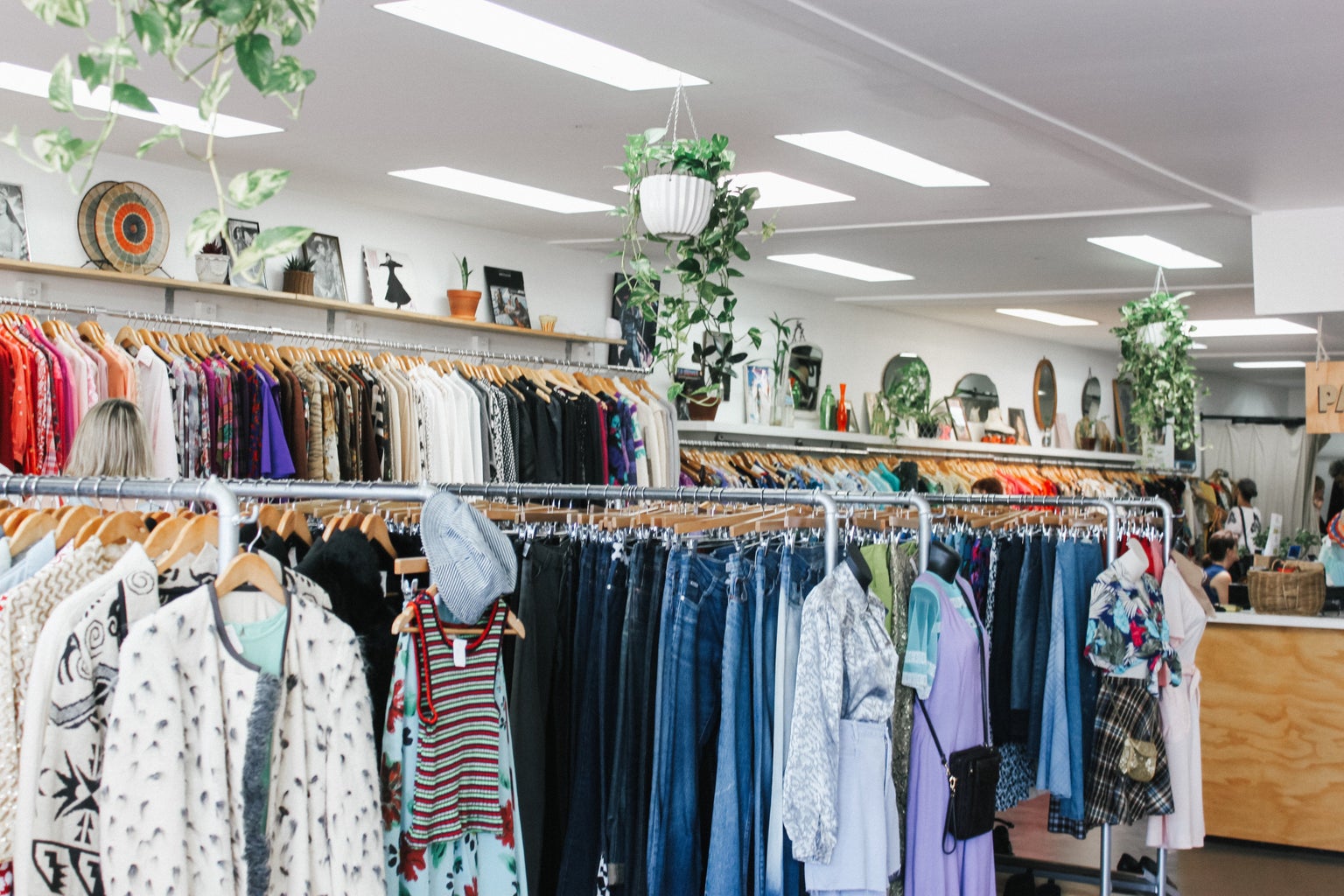‘Sustainability’ has been one of the biggest buzzwords entering this new decade. Perhaps, to your surprise, the fashion industry is highly detrimental to the environment. I know that it can be a little overwhelming to navigate the sustainable fashion industry, but hopefully this article will be able to guide you as to why it is important to be more sustainable with your shopping habits and how to move away from fast fashion.
‘Fast fashion’ vs ‘slow fashion’
If you have been circulating within the world of sustainable fashion, you probably would have come across the terms ‘fast’ and ‘slow’ fashion. But what exactly do these terms mean and what are the implications of the two streams?
Generally, ‘fast’ fashion brands are what you’d come across in the mall. They mimic styles and trends that are on the runway and produce them at a very low cost. Typically, production is at a low cost because the materials used are of poorer quality and they tend to be unethically produced. The people who work for these brands are often workers in poor working conditions and are paid unfair wages. Since ‘fast’ fashion is based on trends, it encourages consumers to buy clothing every season when these trends change. Additionally, because the clothing is produced from low quality materials you end up buying clothes every year because the condition of your clothes deteriorates at a faster rate. Your old clothes, from previous seasons or those that are no longer in good condition, are what ends up in the bin and ultimately in landfills that are polluting the earth.
In contrast, ‘slow’ fashion is a movement whereby companies design and produce garments with quality material aimed for longevity and generally do not follow trends. They aim to design garments that age well as the years pass by. Hopefully, workers employed by sustainable brands also receive fair wages. Now, given that these brands focus on quality, rather than quantity, and actually pay their workers fairly, naturally their prices will be more expensive than ‘fast’ fashion brands. This is what usually discourages people from investing in ‘slow’ fashion brands. From a financial point of view, especially from a student’s perspective, I totally get it! However, if you think about it, the whole point of ‘slow’ fashion is to have people think critically about why they buy the clothes that they buy, and how long those clothes will last. If you invest in a garment from a sustainable brand, you’ll probably have that garment last a few years. However, with ‘fast’ fashion you’d end up buying new clothes every season – costs will eventually add up to the amount of one garment from a sustainable brand. And over the course of a few years you’ll have more clothing items that will potentially pollute the earth, if you are continuously purchasing ‘fast’ fashion.
Cheaper Alternatives to Shopping Sustainably
Now, investing in ‘slow’ fashion brands is not the only way you can be more sustainable. To be honest, it can be quite elitist to expect people from all financial backgrounds to only invest in ‘slow’ fashion brands. Here are two are ways you could shop sustainably at a lower cost:
Thrifting and Clothing Swaps
Thrifting has become increasingly popular over the last few years. Now, there are two ways to go about thrifting: shopping vintage and shopping contemporary brands. Vintage thrifting usually involves buying vintage pieces from decades ago, and might include luxury and high-ends brands. Because luxury brands are usually very expensive these vintage thrifted items tend to be on the more expensive side, but will be sold at a fraction of the original price. Vintage items also tend to be very high quality and have amazing longevity.
You could also thrift contemporary brands, which tend to be more affordable. I would not suggest thrifting in Lower Main Road in Observatory (if you have the means, go ahead), because their pricing on contemporary brands can be really expensive and may discourage you from investing in pre-loved items. I would suggest going to charity stores or flea markets that can be found around town. There are also a ton of Instagram accounts that sell vintage pieces or clothes from their own wardrobe such as old_news_vintage or Lootsin. The only disadvantage about online thrifting is that you would need to pay some form of shipping if you are not near a pick-up location.
Clothing swaps are organized events where a bunch of people come together and simply swap their clothes with others who are also participating. These are great as they don’t require you to actually spend any money, but it is also a fabulous way to get rid of that pile of clothes that has been sitting in your wardrobe.
Work with what you got
The best way to be sustainable is to take care of the clothing you already own. I don’t know about you, but sometimes I find myself wearing the same five items in my wardrobe and can get very uninspired and demotivated to wear what I already own. I would suggest you do a closet clean out, just to see what it is that you actually own. I’d also recommend you reduce the amount of times you wash your clothes to ensure you comply to the washing instructions that are usually on the clothing labels. Only wash items when they need to be washed. This will ensure that your clothes remain in the best condition for a longer period of time. If you do decide to go shopping to vamp up your closet, please (I beg of you), try to stay away from trendy pieces. Ask yourself, is that animal print skirt going to be cute next season? Jess wrote a wonderful article on fashion trends so I’d highly recommend you go check it out too!

Other Things to Think About:
Online shopping
Online shopping is incredibly convenient as we can do it at the comfort of our own homes. However, the practice itself can be more detrimental to the environment. The clothing items that are shipped generally requires a lot more packaging, including tonnes of plastic wrapping. Additionally, that package would need to be flown over to your address, which adds to your carbon footprint to a large extent. If you do decide to shop online, I’d suggest you select the store closest to you or to rather shop online from local brands.
Shopping bags
Finally, there seems to be some odd flex that comes with showing off all our shopping bags at the end of the day. Similarly to grocery shopping, there’s no need to request a new bag everytime you go shopping. Either invest in a durable bag that you can use whenever you go clothing shopping or just use some of the old bags you have collected over time.
Finally
Thred Up is an online thrift store that just recently released a “How Dirty is Your Closet” quiz, which can help you calculate your fashion footprint.





